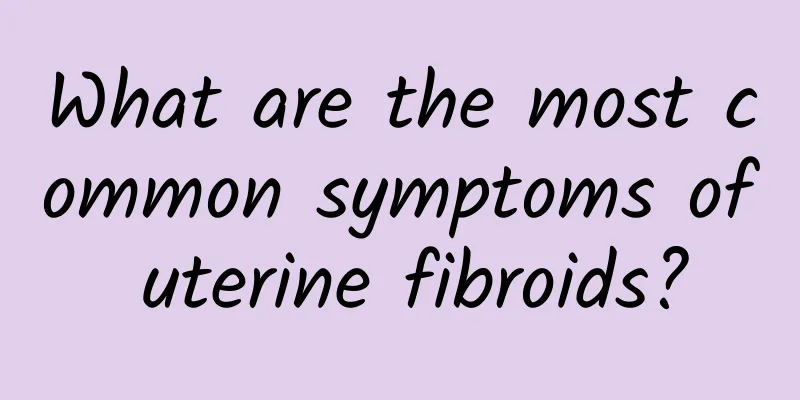What are the most common symptoms of uterine fibroids?

|
What are the most common symptoms of uterine fibroids? Uterine fibroids are benign tumors formed by the proliferation of uterine smooth muscle tissue. They are more common in middle-aged women. According to a large number of autopsy examinations, about 20% of women over 30 years old have single or multiple fibroids of varying sizes in their uterus. However, because the symptoms are not obvious, they have not attracted the attention of women and have never sought medical treatment. The exact cause of uterine fibroids is not clear, but it has been confirmed that uterine fibroids occur in women of childbearing age and stop growing and shrink after menopause, suggesting that the growth and development of uterine fibroids may be related to estrogen. Estrogen can cause the proliferation and hypertrophy of uterine muscle cells, thickening of the muscle layer, and enlargement of the uterus. According to the location of the fibroids, they can be divided into cervical fibroids and uterine body fibroids. According to the relationship between the fibroids and the uterine myometrium, they can be divided into the following types: 1. Intramural fibroids: fibroids located in the myometrium account for about 60%-70% of the total; 2. Subserosal fibroids: uterine fibroids protrude from the surface of the uterus; 3. Submucosal fibroids: Uterine fibroids protrude into the uterine cavity, causing the cavity to expand and deform. Most small uterine fibroids have no symptoms. Many patients seek medical attention due to irregular menstruation, which is manifested by increased menstrual blood volume, prolonged menstrual period, and irregular menstruation. It is only through gynecological examination that uterine fibroids are confirmed. The main causes of uterine fibroid bleeding are due to enlarged uterine cavity, increased endometrial area, poor uterine contraction, and excessive endometrial hyperplasia. This situation is more common when the intramural fibroids grow larger or have multiple nodules. Once submucosal fibroids become necrotic, ulcerated, or infected, there will be continuous vaginal bleeding accompanied by a foul odor. |
<<: Are adnexal cysts and ovarian cysts the same thing?
>>: What are the symptoms of adenomyosis?
Recommend
To strengthen your knees and waist, lower your posture first to exercise your thigh muscles
Pain is a common problem in the waist, neck, knee...
Is the cost of treating uterine effusion high?
Uterine effusion is a very common gynecological d...
A woman took drugs to regulate menstruation and gained a lot of weight. Famous weight loss doctor: Be careful of drug-induced obesity
Many women in China have trouble with irregular m...
How big is the ovarian chocolate cyst and how easy is it to rupture
How likely is an ovarian chocolate cyst to ruptur...
What should women pay attention to after cervical erosion repair surgery? What are the hazards of cervical erosion repair surgery?
There are many women who suffer from gynecologica...
Why do women develop uterine fibroids? What can I eat to eliminate uterine fibroids the fastest?
Why do women develop uterine fibroids? Uterine fi...
What causes pelvic inflammatory disease after childbirth?
Postpartum is an important recovery period for wo...
Postpartum vulvar itching and abnormal vaginal discharge
If you experience vulvar itching and abnormal vag...
Experts explain in detail the main symptoms of cervical hypertrophy
Cervical hypertrophy is a gynecological disease w...
Is fat the culprit of obesity? A low-fat diet won’t make you lose weight! Study: Carbohydrates are the key
Losing weight requires controlling your diet, and...
Can bacterial vaginosis be completely cured?
Women with bacterial vaginosis should pay attenti...
What causes cervical bleeding? There are five possible causes of bleeding.
Cervical bleeding is very common and many female ...
There are auspicious times to eat fruits. Are you eating them right? Which is better, before meals, after meals, or between meals? Nutritionists say...
Fruits contain rich nutrients such as vitamins, m...
What are the common manifestations of uterine fibroids?
Most people who suffer from uterine fibroids stil...
Women can eat these foods to supplement collagen after menstruation and look younger
Women have their menstruation every month, and th...









